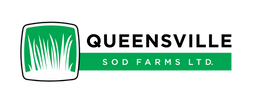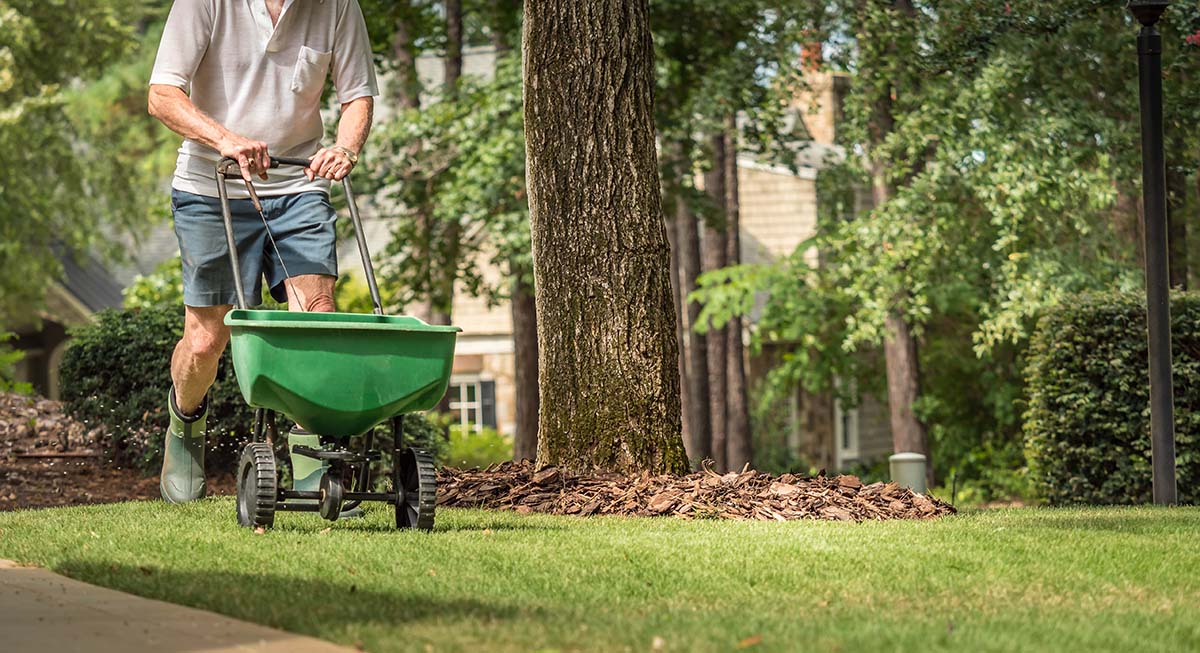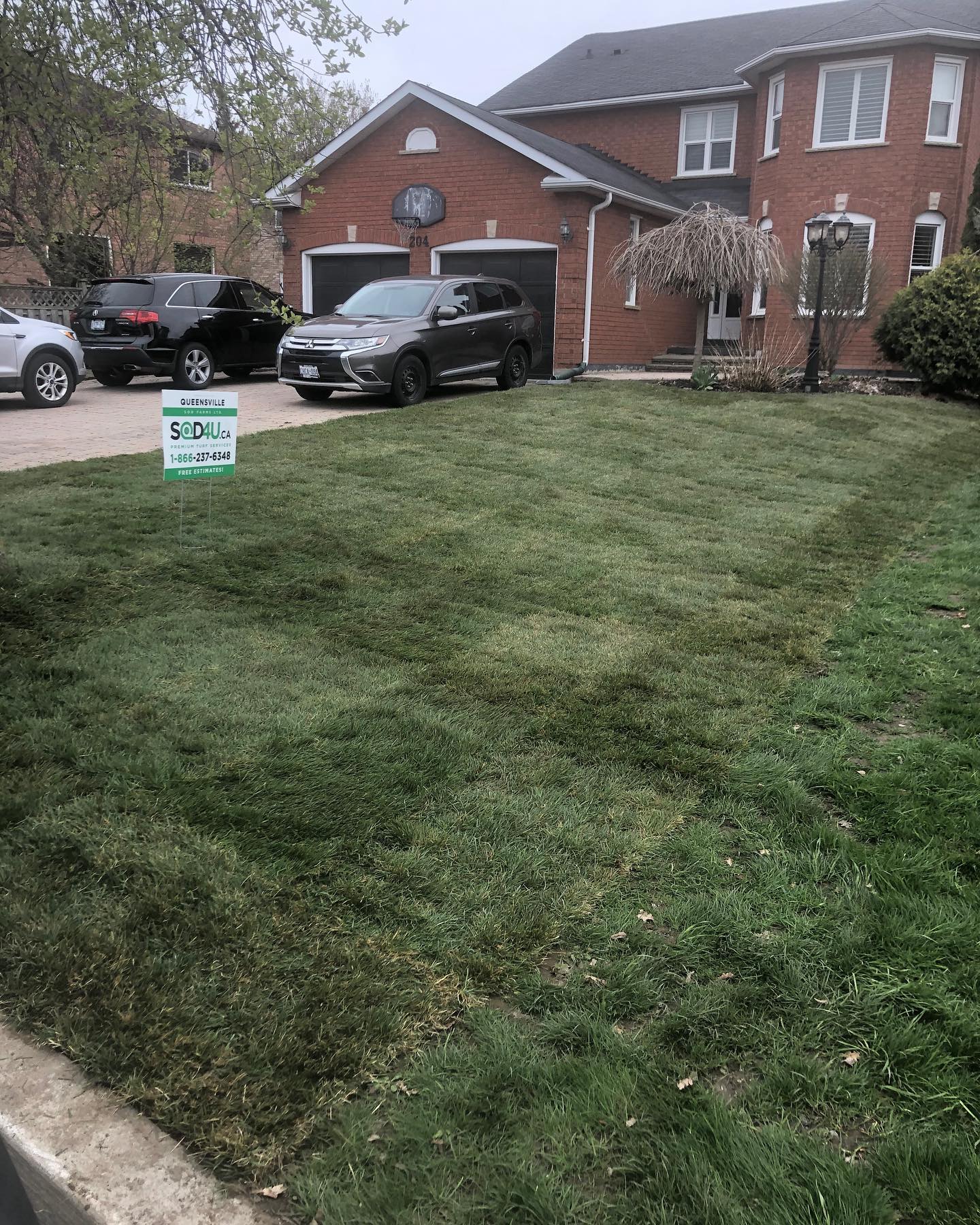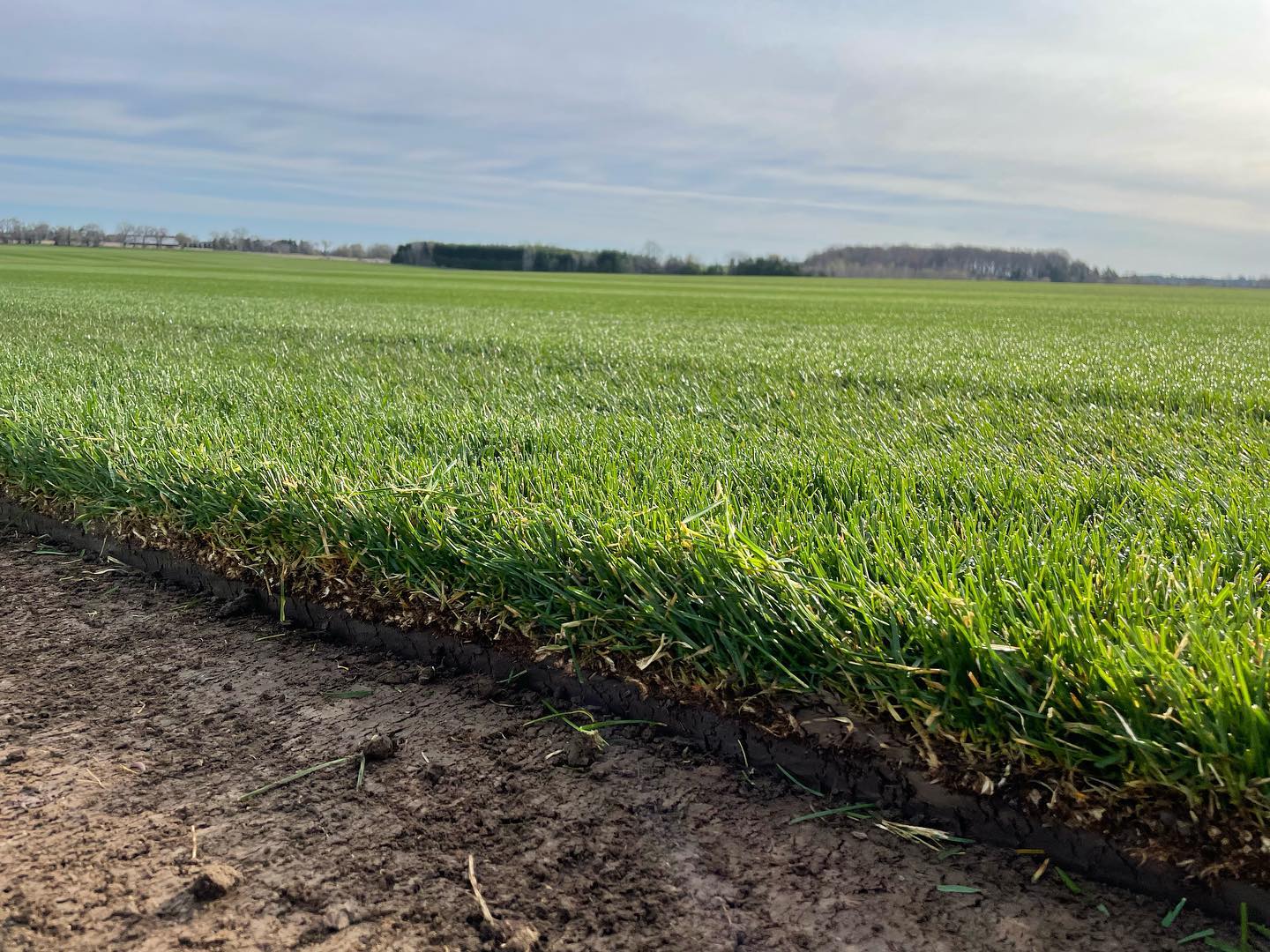Fall is a great season for the sod on your lawn. The milder temperatures provide it with a great time to grow. Furthermore, along with some diligent lawn care, autumn, like other seasons, is also an excellent time to fertilize your lawn. The experts at Queensville Sod will explain everything you need to know about fertilizing your sod in the fall.
Do I Need to Fertilize Grass and Sod in the Fall?
With your grass bouncing back from a dry summer and the sleepy winter around the corner, you might think there’s little reason to fertilize your lawn. However, for perfectly healthy sod, you should fertilize your grass in every season except winter when the grass goes dormant. Fall is no exception. In fact, since the grass will be going dormant in the winter, providing the grass with fertilizer’s extra nutrients will give your sod the boost it needs to endure the winter and quickly bounce back into a green and healthy spring.
Advantages of Fertilizing Sod in the Fall
During the fall, your grass prepares for the winter by strengthening its roots. Winter’s snow cover means your sod primarily receives little to no sunlight. Instead, it relies on nutrients in the soil and needs to fight off potential diseases. Fall fertilizer is specifically designed to help grass for these winter conditions. Using the proper fertilizer in the fall gives every advantage it needs to thrive through the winter.
Our fall fertilizer is 5-20-20, meaning it is low in nitrogen and high in phosphorus and potassium. This is the same fertilizer used to support the growth of new sod because the higher levels of phosphorus and potassium allow the grass to develop deep roots and resist diseases. Nitrogen is low because it's responsible for fostering the growth of the grass blades. Grass always needs a little bit of nitrogen to survive, but sod and your lawn go dormant in the winter. This means it will need much less nitrogen because it won’t be growing. Instead, it will happily use the specialized fall formula to build strong roots of phosphorous and develop a barrier from disease with that healthy shield of potassium.
How to Fertilize Sod and Grass in the Fall
Now that you understand the advantages of fertilizing your sod in the fall, you’ll want to know how. Fertilizing your lawn is simple, and only requires fertilizer and a spreader. Here are a few steps to fertilizing your lawn:
- Water the lawn a few days before to provide the best soil conditions for receiving the fertilizer. If it has recently rained, this can also provide the proper conditions.
- Put the spreader on the right settings and fill it with fertilizer.
- Start by spreading fertilizer around the edges of your lawn, ensuring you hit all edges.
- Spread fertilizer on the rest of your lawn.
- Return any unused fertilizer to the container. You can use the rest when fall next comes around or as you lay new sod.
You should fertilize the grass twice in the fall: once at the start of the season and again about 6-8 weeks later. This will give the grass a healthy boost. Don’t fertilize too often, or you could poison the grass. Of course, not fertilizing enough will deny your sod the support it needs for winter.
An extra fall fertilizing tip: You can also provide your grass with some extra nutrients by mulching your leaves. However, since leaves primarily contain nitrogen, it’s better to save them in a compost bin as a fertilizer supplement for spring and summer when your sod will be hungrier for nitrogen.
Fall is the Time for Fertilizing Your Sod
Now you have everything you need to know about why and how you should fertilize your sod in the fall. All that’s left is to get some high-quality fall fertilizer from Queensville Sod. We also recommend browsing our selection of fertilizers tailored for the spring and summer. They’re perfect for making sure your sod thrives throughout the year. If you have any questions about maintaining your sod this fall or about fertilizing, be sure to contact us at Queensville Sod.





